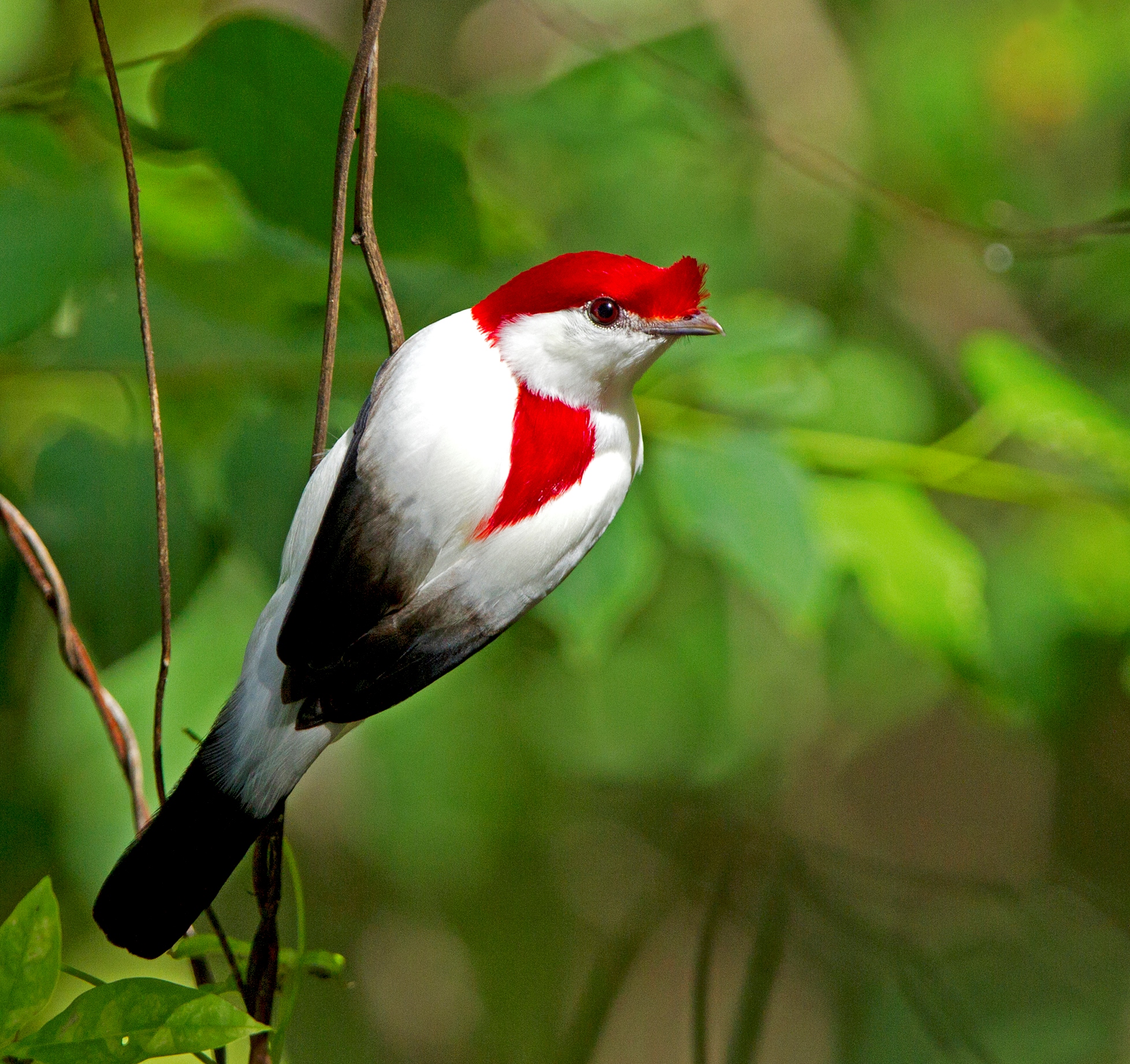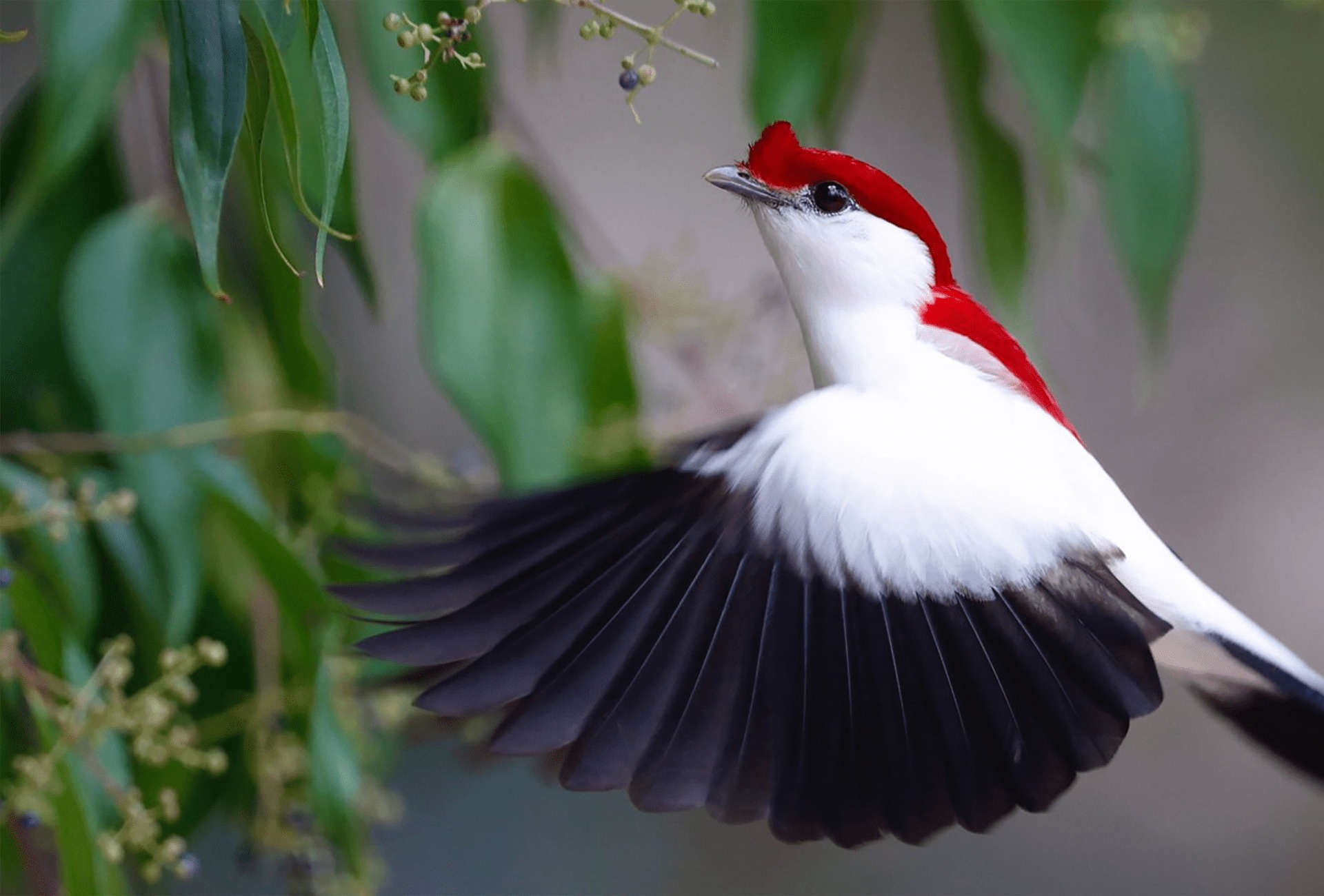The Araripe Manakin is a beautiful bird with white feathers and a vibrant red crown on its head.

The Araripe Manakin, which is also called Aptilophia bokermanni, is a bird species that is currently experiencing critical endangerment. It is named after the region in Brazil where it was first discovered. This bird species follows the typical manakin gender difference where males and females have distinct variations in their plumage colors. They are relatively big birds with long tails, measuring around 14.5 centimeters (5.7 inches) in length. The males have a distinctive appearance with predominantly white plumage, except for their black wings and tail. They also have a red feather crown with a frontal tuft and mid-back area.

The iris, or the colored part of our eyes, often has a reddish hue. Female individuals typically have an olive-green iris with a lighter belly and a smaller olive-green patch above their beak.

This particular type of bird is exclusively located in a restricted region in southern Ceara, at the base of Chapada do Araripe. It is common for them to be observed in pairs.

The Araripe Manakin has a restricted residence in the humid forests situated along the riverbanks. These forests are identified as “gallery” forests due to their origination from streams that originate from the Araripe Plateau’s base. The flowing water from these streams helps these forests thrive even though they are surrounded by arid landscapes such as dry shrublands and thorn forests.

The avian species under discussion feed on a wide variety of fruits that are commonly found in the dense undergrowth of their natural habitat, where they live alongside other indigenous plants like the Cordia species.

The araripe Manakin experiences a period of nesting that seems to align with the rainy season, which endures for about half a year. This particular species is capable of producing two offsprings every year. Researchers found that areas with less rainfall, isolated patches of forests, and regions with higher human presence had fewer instances of pests. The female birds were observed to be the sole caretakers during all stages of nesting, and no discrepancies in parental dedication were noted between nests with one or two fledglings.

Back in 2000, a water park was built in Nascente do Farias, causing the loss of most of its natural environment. The area’s trees were cut down and replaced with banana plantations. As of August 7th, 2018, an assessment revealed that there are only 150 to 700 mature individuals left in Brazil.

